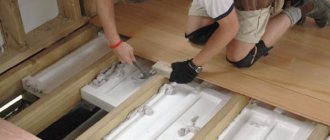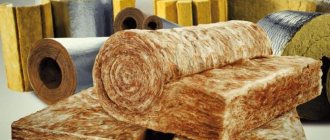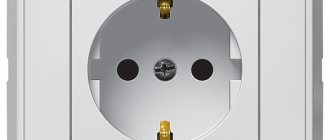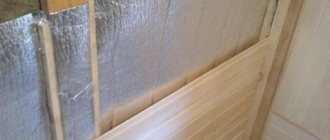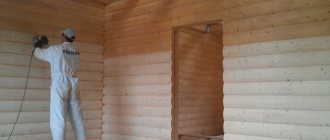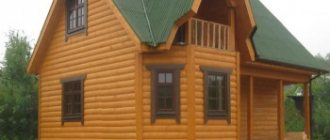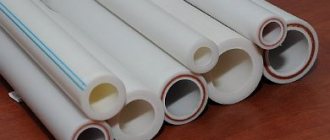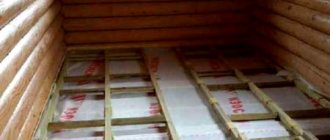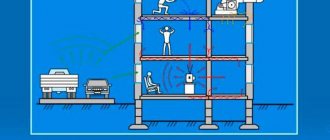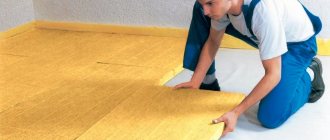To eliminate the largest heat losses in a residential building, it is impossible to do without insulation. The process of insulating the floor of the first floor using wooden beams located above the basement begins at the construction stage, but the work can be done after construction. Mandatory thermal insulation and sound insulation of horizontal structures of the upper floors is also required.
Design features
Interfloor ceilings are subject to mandatory insulation if installed on wooden beams. This is justified by a thin-layer rough coating, which is laid on top of the timber support structure. As a rule, this is a board with a decorative coating. Regardless of the thickness of the materials used, the total thermal resistance of the structure is lower than recommended by the relevant documents. The exception is regions with warm and hot climates, where buildings generally do not need thermal insulation.
See also: Catalog of companies that specialize in redevelopment of country houses of any complexity
Basic requirements for floors
During the construction of floors, a sufficient degree of noise insulation should be ensured; the value is established by design standards. To do this, you should close the gaps at the places where the material joins; only in this case, sounds from neighboring rooms will spread minimally. Floors that separate rooms with a certain temperature difference must meet thermal protection requirements. This indicates the need to use an additional layer of thermal insulation. Any structure, especially one made of wood, is not able to withstand prolonged exposure to fire. It should be remembered that each material is characterized by a certain fire resistance limit. For reinforced concrete floors it is 60 minutes, but if the structure is made of wood with backfill and has a plastered surface underneath, then the fire resistance will last 45 minutes. Wooden floors that are protected with a layer of plaster can withstand flames for about 15 minutes. If there are wooden floors that were not protected with fireproof materials during the installation process, it should be taken into account that their fire resistance limit is even lower.
Choice of insulation
Laying of the support beam is carried out in increments of 60-100 cm, which is determined taking into account the total load on the sheathing and the method of insulating the interfloor ceiling using wooden beams. In any case, grooves are formed between the structural elements, which are filled with heat-insulating material. Since fasteners can be practically anything, the structural design of the floor/ceiling can be considered the main criterion for choosing insulation.
Thermal insulation materials for home Source sakh.com
The most popular options here are the group of slab heat insulators:
- Mineral wool. Lightweight and flexible insulation has low thermal conductivity and good vapor permeability. Rolled samples are also available for sale, which is important for working with floors. The material is inert to corrosion and biological activity. The main disadvantage is the ability to absorb moisture. Damp fabric can become a favorable environment for the development of fungus and bacteria, and the situation with thermal conductivity worsens. The solution to the problem is to create a water barrier and lay a vapor barrier. There is another disadvantage - shrinkage over time. But in a horizontal position, the process occurs almost imperceptibly; the material does not stop filling the space between the limiting elements of the groove.
Variety of mineral wool heat insulators Source historitime.ru
- Expanded polystyrene. Plates with a foamed structure are not inferior to their mineral counterparts in thermal conductivity. But they are inferior in vapor permeability. On the one hand, there is no need to install moisture barriers; on the other hand, the canvases prevent the natural “breathing” of the wooden cladding. That is, installation work must be carried out taking into account the design of the ventilation gap.
- Polyurethane foam. The innovative synthetic material goes on sale both in slabs and in liquid form. The second is applied to the working base by spraying. For this purpose, special equipment or cans filled with foam are used. The second option is relatively more expensive due to high consumption. If we compare polyurethane foam with mineral wool and PPP, the estimate will be higher. But the product pays off in thin layers, durability and practicality.
The table shows the main technical characteristics of slab thermal insulation samples.
| Parameter | Minvata | Expanded polystyrene | Polyurethane foam |
| Thermal conductivity (in W/m*K) | 0,032-0,044 | 0,028-0,034 | 0,019 |
| Vapor permeability (in g/m*h*hPa) | 0,48 | 0,019 | 0,02 |
| Density (in kg/cub.m) | 20-220 | 40 | 25-300 |
| Flammability class | NG | G3 | G1, G2 |
Insulation of the floor between the first and second floors using wooden beams using slab materials can be done both from below and below. Here it is important to fix the canvases in a given position. Since the thermal expansion of synthetic slabs differs from that of wood, on the ground/basement and unheated attic side, the joints of the slabs with the enclosing elements are filled with polyurethane foam for outdoor use.
Crumbly type materials are often used as insulation for floors over wooden beams. In particular, expanded clay. Lightweight ceramic insulation is relevant for working with floor structures. One of the main advantages is its resistance to changes in humidity. The grains absorb and release water equally well. When wet granules freeze, they disintegrate from the inside. The disadvantages include relatively high thermal conductivity. In terms of efficiency, the backfill will be identical to, for example, polystyrene foam if the layer corresponds to three slab thicknesses (15 versus 5 cm).
Specifications:
| Thermal conductivity (in W/m*K) | Vapor permeability (in g/m*h*hPa) | Density (in kg/cub.m) | Flammability class |
| 0,1 | 0,23 | 280-425 | NG |
Characteristics of thermal insulation materials
The production of materials for retaining heat indoors keeps pace with the times. Every year, new and improved materials come into production.
Consumer health and the environment come first. KnauF insulation products fully comply with these requirements.
Eco-friendliness is in fashion, as is taking care of your own body.
When choosing materials, first of all you need to pay attention to:
- heat conductivity level;
- ease;
- moisture resistance;
- fire resistance;
- low level of release of toxic substances or their absence;
- non-susceptibility to putrefactive and fungal processes;
- breathability;
- resistance to rodent attacks;
- flexibility and strength at the same time;
- sorption humidity;
- heat and frost resistance.
The heat retention level varies from 15% to 35%. In areas with a harsh climate, it is necessary to carefully insulate the floors in the attic, otherwise you will have to spend considerable sums on heating the house.
A good level of attic insulation results in smaller temperature changes and reduces condensation under the roof. And this, in turn, is good protection against mold.
Important! High-quality installation of thermal insulation materials guarantees the preservation of a favorable microclimate in the house. Saves you from the cold in winter and from the heat in summer.
Vapor barrier protection against moisture increases the service life of the roof of the house and interfloor ceilings. Metal parts are less susceptible to corrosion. Proper installation of windows in the attic, as well as ventilation holes, prevent increased humidity and allow drafts to appear.
The quality of installation of thermal insulation in the house is indicated by the absence of ice and icicles under the roof, or their minimal presence. In order to avoid the outflow of heat from the house and the appearance of high humidity, at the initial stage of building a house, it is necessary to carefully insulate the interfloor floors.
The advantage of wooden floors is the simplicity and ease of installation work. Wood has a low thermal conductivity, which reduces the outflow of heat during the operation of the home.
Choosing a sound insulator
In the private sector, there is rarely a need to protect the interior of a building from sounds coming from transport and industrial enterprises. However, noise from natural precipitation remains here. This is especially true for insulating the ceiling in a house with wooden floors, the roof of which is covered with metal roofing products.
The boardwalk itself, even with decorative finishing, does not have good acoustic properties. This is due to the inherent conductivity of sound waves in wood. To improve the situation, in addition to insulation, sound insulation of the interfloor ceiling is carried out using wooden beams.
To solve the problem, materials with a sound absorption coefficient greater than 0.4 are considered. These include three groups:
- Solid. The main representative is mineral wool containing vermiculite, pumice or perlite. The acoustic indicator is around 0.5. The average density of the canvas is 350 kg/cub.m.
Vermiculite Source prom.st
- Semi-rigid. This includes some types of mineral wool and slabs with a foamed structure. Sound absorption is in the range of 0.5-0.75 units.
- Soft. This is a series of fibrous materials of mineral or synthetic nature, made of wool (glass, felt, mineral wool). Here the coefficient reaches 0.95 units, the mass of a cubic meter is up to 70 kg.
Soundproofing of interfloor floors using wooden beams is carried out in various ways. The slabs are laid in grooves with fixation between the cladding layers. Felt is placed at the joints of structural elements (on joists, along the perimeter). Thin sheets of cork, polyethylene foam, polyurethane foam, and rubber are laid between the subfloor and the final finish.
Expanded clay and the materials that make up the black base of the floor also have a positive effect on the acoustic environment. These can be slabs made of wood chips. Installation is carried out using the “floating” method without rigidly fixing the panels to wooden beams.
Floor insulation with expanded clay and plank flooring Source saucyintruder.org
Sound waves are transmitted through the ceiling elements to the walls, which can also propagate. To partially or completely eliminate this, you need to isolate the connection between the beam and the supporting structure. For this, roofing material is additionally used. The material acts as a water barrier. The canvas is laid on the wall, and the end part of the beam is wrapped with it. A wooden liner is installed between the base elements.
Another solution is to increase the thickness of the ceiling. As a rule, the calculation is performed based on the height of the beam. A finishing layer with an identical indicator can be created by using a frame structure, installing a floor on joists over a beam sheathing, or using a bulk-type heat insulator.
Work on insulation of interfloor ceilings in a wooden house
Preparatory
Before starting work, it is necessary to carefully inspect the structure to detect mold, mildew, and signs of damage by the bark beetle.
If the inspection results reveal defects, it is necessary to treat the affected areas with special substances. Then you can begin installation of floor insulation material. If necessary, strengthen the beams.
Waterproofing
For these works, a superdiffusion membrane is used, since a waterproofing film is not suitable. The membrane reliably protects the ceilings from water ingress, but allows steam to pass through.
The membrane covers the entire structure that needs protection. The beams are wrapped with film for waterproofing. Each free edge is left uncovered to allow the beams to dry naturally.
Laying material for thermal insulation
Foam plastic or penoplex, for example, is attached using liquid nails and hardware specially designed for this purpose.
The mineral wool is secured with wire. special hardware or liquid nails. You can use wire to secure the cotton wool.
Any heat-insulating material can be attached to wooden floors using nails or self-tapping screws, which greatly simplifies installation work.
Where to buy insulation for your home? We have selected the best online stores with low prices for you.
- Thermal insulation in the Petrovich store - Go to the online store >>
- Thermal insulation materials in Leroy Merlin - Go to https://leroymerlin.ru/catalogue/teploizolyaciya/ >>
- Thermal insulation in OBI - Go to the store at https://www.obi.ru/stroitelnye-materialy/teploizolyaciya/ >>
- Thermal and sound insulating materials in Maxidom>> Go to the catalog https://www.maxidom.ru/catalog/teplozvukoizoljacionnye-materialy/ >>
Go to the insulation catalogue>>
